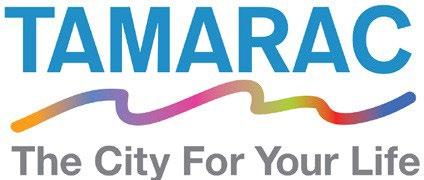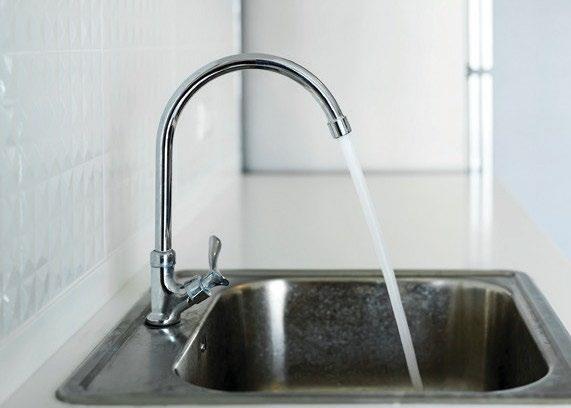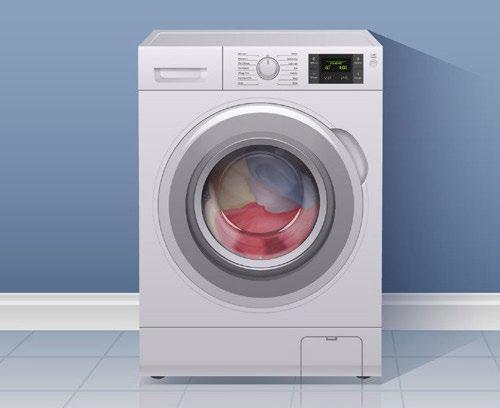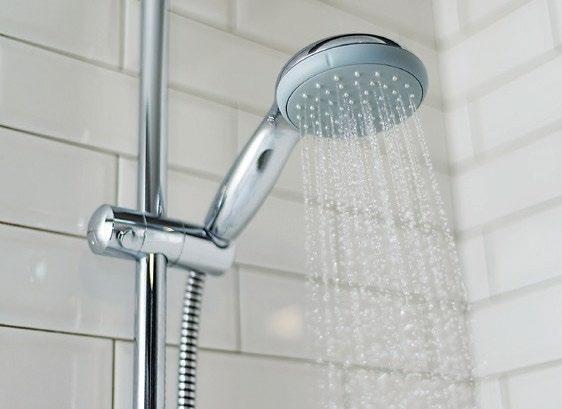

2024 Water Quality Report - East
The City of Tamarac is pleased to provide you with the 2024 annual Water Quality Report. This report contains important information about the City’s water source, water supply, the treatment process and the contents of your drinking water.
The Environmental Protection Agency’s (EPA) Safe Drinking Water Act requires the City of Tamarac to provide water customers with a summary report of laboratory tests taken throughout the year. Except where indicated otherwise, this report is based on test results for the period of January 1, 2024 to December 31, 2024. Data obtained before January 1, 2024, and presented in this report, are from the most recent testing done in accordance with the laws, rules, and regulations. For more information about this report or to obtain copies, please call (954) 597-3790.
Este informe contiene información muy importante sobre su agua potable. Para información en español, por favor llamar al teléfono (954) 597-3792.



DRINKING WATER SOURCES AND CONTAMINANTS

The sources of drinking water (both tap water and bottled water) include rivers, lakes, streams, ponds, reservoirs, springs, and wells. As water travels over the surface of the land or through the ground, it dissolves naturally occurring minerals and, in some cases, radioactive material, and can pick up substances resulting from the presence of animals or from human activity. Contaminants that may be present in source water include:
• Microbial contaminants, such as viruses and bacteria, which may come from sewage treatment plants, septic systems, agricultural livestock operations, and wildlife.
• Inorganic contaminants, such as salts and metals, which can be naturally occurring or result from urban stormwater runoff, industrial or domestic wastewater discharges, oil and gas production, mining, or farming.
• Pesticides and herbicides, which may come from a variety of sources such as agriculture, urban stormwater runoff and residential uses.
• Organic chemical contaminants, including synthetic and volatile organic chemicals, which are by-products of industrial processes and petroleum production, and can also come from gas stations, urban stormwater runoff and septic systems.
• Radioactive contaminants, which can be naturally occurring or be the result of oil and gas production and mining activities.
To ensure that tap water is safe to drink, the EPA prescribes regulations, which limit the amounts of certain contaminants in water provided by public water systems. The Food and Drug Administration (FDA) regulations establish limits for contaminants in bottled water, which must provide the same protection for public health. Drinking water, including bottled water, may reasonably be expected to contain at least small amounts of some contaminants. The presence of contaminants does not necessarily indicate that the water poses a health risk. More information about contaminants and potential health effects can be obtained by calling the Environmental Protection Agency’s Safe Drinking Water Hotline at (800) 426-4791.
SPECIAL HEALTH CONCERNS
Some people may be more vulnerable to contaminants in drinking water than the general population. Immunocompromised persons such as persons with cancer undergoing chemotherapy, persons who have undergone organ transplants, people with HIV/AIDS or other immune system disorders, some elderly, and infants can be particularly at risk from infections. These people should seek advice about drinking water from their health care providers. EPA/Center for Disease Control (CDC) guidelines on appropriate means to lessen the risk of infection by Cryptosporidium and other microbiological contaminants are available from the Safe Drinking Water Hotline at (800) 426-4791.
WHERE YOUR WATER COMES FROM
The City of Tamarac (EAST) gets its water from City of Fort Lauderdale wells that draw water from the Biscayne Aquifer, which is an underground water supply. Before it reaches your faucet, your water travels from the Biscayne Aquifer to one of two City of Fort Lauderdale water treatment plants – FiveAsh, a lime softening plant, or Peele Dixie, a nanofiltration membrane plant.
At the treatment plants, the water is softened, fluoridated, filtered, aerated, and disinfected to remove naturally occurring minerals, particles, dissolved gases, and most of the color. Once the water is treated, it is routinely monitored and tested before it is pumped to storage tanks or through the distribution system to your faucet.
TERMS AND DEFINITIONS
The following definitions explain abbreviations and information found in the 2024 Water Quality Table: Action Level (AL): the concentration of a contaminant that, if exceeded, triggers treatment or other requirements that a water system must follow.
Locational Running Annual Average (LRAA): the average of sample analytical results for samples taken at a particular monitoring location during the previous four calendar quarters.
Parts per billion (ppb) or Micrograms per liter (ug/l): one part by weight of analyte to 1 billion parts by weight of the water sample.
Parts per million (ppm) or Milligrams per liter (mg/l): one part by weight of analyte to 1 million parts by weight of the water sample.
Maximum Contaminant Level or MCL: the highest level of a contaminant that is allowed in drinking water. MCLs are set as close to the MCLGs as feasible, using the best available treatment technology.
Maximum Contaminant Level Goal or MCLG: the level of a contaminant in drinking water below which there is no known or expected risk to health. MCLGs allow for a margin of safety.
Maximum residual disinfectant level or MRDL: the highest level of a disinfectant allowed in drinking water. There is convincing evidence that addition of a disinfectant is necessary for control of microbial contaminants.
Maximum residual disinfectant level goal or MRDLG: the level of a drinking water disinfectant below which there is no known or expected risk to health. MRDLGs do not reflect the benefits of the use of disinfectants to control microbial contaminants.
Not Detected (ND): indicates that the substance was not found by laboratory analysis.
Picocurie per liter (pCi/L): measure of the radioactivity in water.
Treatment Technique (TT): a required process intended to reduce the level of a contaminant in drinking water.
Initial Distribution System Evaluation (IDSE): an important part of the Stage 2 Disinfection By-Products Rule (DBPR). The IDSE is a one-time study conducted by water systems to identify distribution system locations with high concentrations of trihalomethanes (THMs) and haloacetic acids (HAAs).
READING THE WATER QUALITY TABLE
The EPA requires the City of Tamarac and all water suppliers in the United States to provide an annual report on laboratory tests taken on its drinking water. The 2024 Water Quality Table provides a summary of thousands of test results and shows that the City’s water meets or exceeds all primary drinking water standards.
SOURCE WATER ASSESSMENT
In 2024 the Florida Department of Environmental Protection performed a Source Water Assessment for the City of Ft. Lauderdale. FDEP identified 20 potential contaminant sources with a low to moderate susceptibility level of concern. The assessment results are available on the FDEP SWAPP website at https://prodapps.dep.state.fl.us/swapp/
ABOUT LEAD
If present, elevated levels of lead can cause serious health problems, especially for pregnant women and young children. Lead in drinking water is primarily from materials and components associated with service lines and homeplumbing.TheCity of Tamaracisresponsiblefor providing high-qualitydrinkingwaterbut cannotcontrol the variety of materials used in plumbing components. When your water has been sittingfor several hours, you can minimizethe potentialfor lead exposureby flushing your tap for 30seconds to 2 minutes before using water for drinkingor cooking.If you are concernedabout leadinyour water, youmaywishto have your watertested. Informationonleadindrinkingwater,testingmethods,andstepsyoucantaketominimizeexposureisavailable from the Safe Drinking Water Hotline or at http://www.epa.gov/safewater/lead.
2024 WATER QUALITY TABLE
MICROBIOLOGICAL CONTAMINANTS
RADIOACTIVE CONTAMINANTS
Contaminant and Unit of Measurement
Radium 226 + 228 or combined radium (pCi/L)
INORGANIC CONTAMINANTS
Contaminant and Unit of Measurement
Erosion of natural deposits
Erosion of natural deposits;runofffrom orchards; runoff from glass andelectronics production wastes
Discharge of drilling wastes; discharge from metalrefineries;erosion of natural deposits
Erosion of natural deposits; discharge from fertilizer and aluminum factories. Water additive which promotes strong teeth when at the optimum level of 0.7 ppm
Erosion of natural products discharge from refineries and factories; runoff from landfills and farms Runoff from fertilizer use; leaching from septic tanks, sewage; erosion of natural deposits
Runoff from fertilizer use; leaching from septic tanks, sewage; erosion of natural deposits
Secondary Contaminants Table
2024 WATER QUALITY TABLE (Continued)
DISINFECTANTS AND DISINFECTION
Disinfectant or Contaminant and Unit of Measurement
(ppb)
UNREGULATED CONTAMINANTS
Contaminant and Unit of Measurement
1H,1H, 2H, 2HPerfluorohexane sulfonic acid (4:2FTS)
5/23; 6/23; 11/23
Perfluorobutanesulfonic acid (PFBS) 5/23; 6/23; 11/23
5/23; 6/23; 11/23
Perfluorobutanoic acid (PFBA)
Perfluoropentanoic acid (PFPeA)
Perfluoroheptanoic acid (PFHpA)
Perfluorohexanesulfonic acid (PFHxS)
Perfluorooctanesulfonic acid (PFOS)
Perfluorooctanoic acid (PFOA)
5/23; 6/23; 11/23
5/23; 6/23; 11/23
5/23; 6/23; 11/23
5/23; 6/23; 11/23
5/23; 6/23; 11/23
5/23; 6/23; 11/23
PFAS are a group of synthetic chemicals used in a wide range of consumer products and industrial applications including: non-stick cookware, waterrepellent clothing, stain resistant fabrics and carpets, cosmetics, firefighting foams, electroplating, and products that resist grease, water, and oil. PFAS are found in the blood of people and animals and in water, air, fish, and soil at locations across the United States and the world.
“The City of Fort Lauderdale has been monitoring for unregulated contaminants (UC) as part of a study to help the U.S. Environmental Protection Agency (EPA) determine the occurrence in drinking water of UC and whether or not these contaminants need to be regulated. At present, no health standards (for example, maximum contaminant levels) have been established for UC. However, we are required to publish the analytical results of our UC monitoring in our annual water quality report. If you would like more information on the EPA’s Unregulated Contaminants Monitoring Rule (UCMR), please call the Safe Drinking Water Hotline at (800) 426-4791.”
LEAD AND COPPER (TAP WATER)
Contaminant and Unit of Measurement
Lead and Copper sampling is being conducted again in Summer 2027.
Corrosion of household plumbing systems; erosion of natural deposits; leaching from wood preservatives
Corrosion of household plumbing systems, erosion of

City of Tamarac
Public Services Department
10101 State Street | Tamarac, FL 33321
Michelle J. Gomez
Mayor
Kicia Daniel Vice Mayor, District 4
Marlon D. Bolton Commissioner, District 1
Krystal Patterson Commissioner, District 3
Morey Wright Commissioner, District 2
Levent Sucuoglu City Manager
For more information or questions about this report, please contact the City of Tamarac Water Treatment Facility.
Marie Garbal Senior Chemist, City of Tamarac Water Treatment Facility (954) 597-3792
This report is also available on the City’s website at www.Tamarac.org/2024WaterReportWest for residents west of State Road 7/US 441 and www.Tamarac.org/2024WaterReportEast for residents east of NW 31st Avenue.
For Utilities Customer Billing Questions: Customer Service (954) 597-3590
For Water Service Questions: Public Services Department (954) 597-3750
Commissionmeetingsare held thesecond and fourth Wednesday of each month. For more information go to www.Tamarac.org

